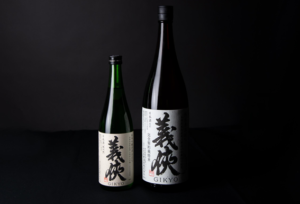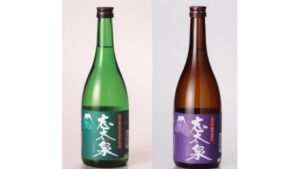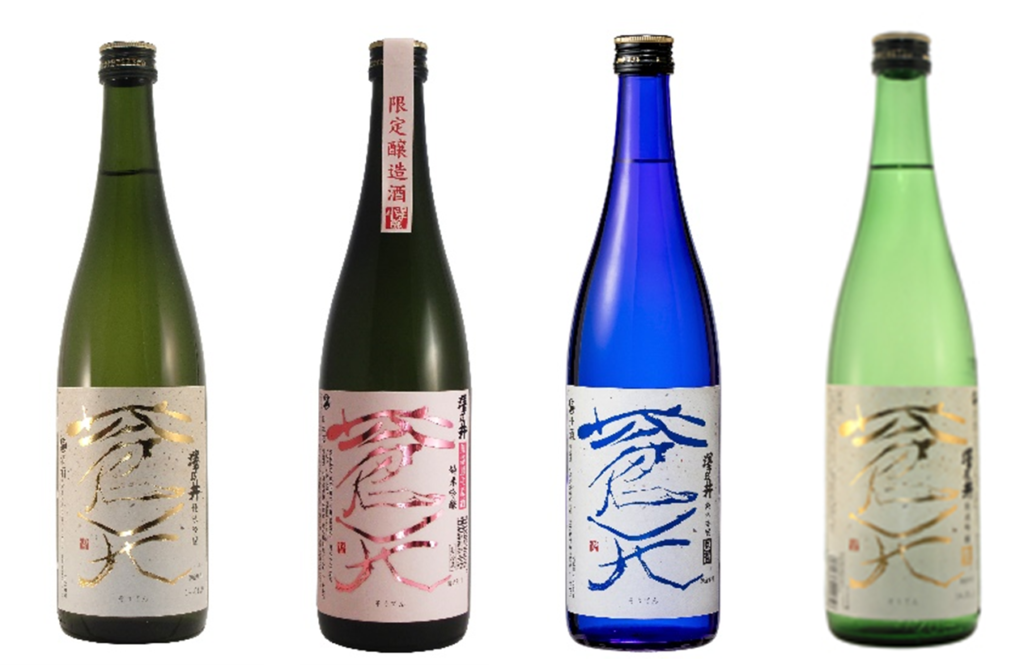
SOTEN is brewed in Ome city, Tokyo.
Contents
Where SOTEN came from
Don’t you have an image of Tokyo as a city of skyscrapers and people bumping into each other, shoulder to shoulder? Ome City is located in the western part of Tokyo, rich in nature away from such hustle and bustle.
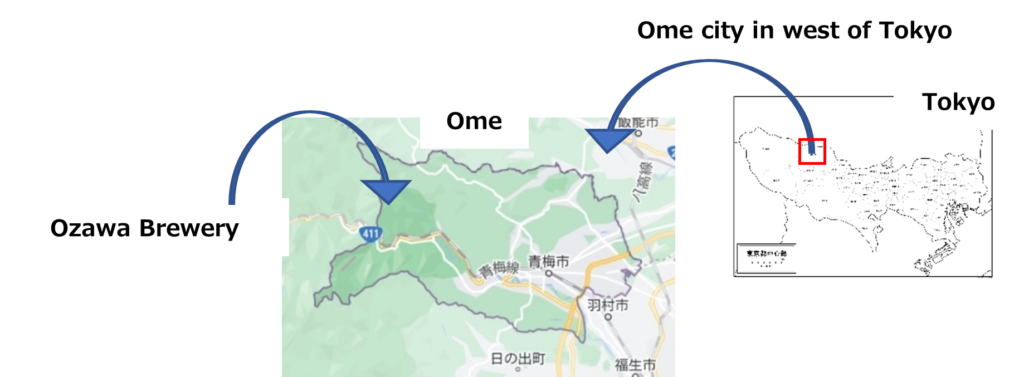
The valley of Ome is deep, and when you look up at the sky from the bottom of that valley, the sky is clear. The name SOTEN was given to express the desire to brew sake that is as grand and boundless as the distant, high, azure sky. When you break down “蒼天(SOTEN)” into Kanji, “蒼“ means blue and “天” means sky or heaven.
There are two Kanji letters for blue. One is “青”, and another is “蒼“. While the former is used for the blue of the three primary colors and represents blue in general, the latter is more of a greenish blue. Originally used to describe lush vegetation, it is now used to describe the deep colors of the sea and sky. It is a perfect match for a sake made in Ome, a region rich in nature.
When I look at the glowing foil stamping of the typeface on the label, I imagine a deep valley full of stars shining in the night sky after the sun has set. All labels are so impressive that once you see them, you may never forget them.
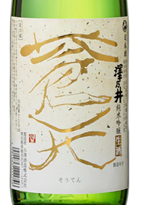
Junmai Ginjo, an unpasteurized type with gold letters, is a clean and fresh type of sake.
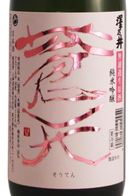
Junmai Ginjo, an unfiltered and unpasteurized type with pink letters,has a rich taste as freshly squeezed with a clean and fresh aroma and the umami flavor of rice
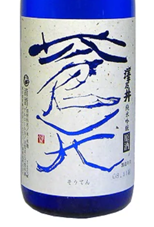
Junmai Ginjo Genshu, an unprocessed type in a blue bottle with blue letters.
It is a year-end-only product, providing excellence and richness in its look and taste.
About Ozawa Shuzo Co., Ltd.
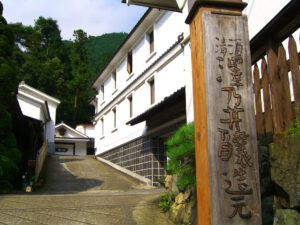
Even if you are not familiar with the name Ozawa Shuzo, you probably have heard of Sawanoi. Yes, Ozawa Shuzo is indeed the brewery that makes that SAWANOI.
However, the name of the brewery is not Sawanoi Shuzo. The correct name is Sawanoi Jozo Moto Ozawa Shuzo (澤乃井醸造元 小澤酒造).
Founded in 1702 in Sawai Village, Bushu (present Ome City, Tokyo).
It is said that the head of the brewery is connected to the Takeda family*1 of Kai Province, who moved from Koshu (present Yamanashi prefecture) to Sawai. This area was a famous “water village”, so called because of its cool and abundant water. The family started brewing there and that was how SAWANOI was born.
Note 1: The Takeda clan was a warrior family in the late Heian to Sengoku periods. The family name was Minamoto. During the Warring States period, the Takeda ruled the province of Kai (near present-day Yamanashi Prefecture), and during the reign of the 19th Takeda Shingen, their territory expanded to the province of Shinano (present-day Nagano Prefecture).
Today, SAWANOI has become a well-known name, and there are various brands under it, including SOTEN.
The brewery has more than 100 employees, 60 of whom are engaged in the sake business, of which 10 are brewers. The brewery is also one of the most popular sake breweries where people want to visit (as of March 2022, according to Jalan) and offers tours of the brewery, a sake tasting room, an art museum, and a restaurant, making it an enjoyable place even for those who are not familiar with sake.
This began in the early 1960s under the circumstances that some people said it was difficult to visualize Tokyo’s sake. So, Ozawa Shuzo decided to open the brewery to the public to take advantage of its location in a rich natural environment and to let people experience sake at the brewery.
At the time, it was strictly forbidden to open the brewery to the general public, but Ozawa brewery dared to change such a policy by turning their brewery to a tourist site, because they judged it more important to convey the charm of sake. Since then, they never miss opportunities to promote Tokyo’s sake, for instance, by releasing a junmai ginjo sake called TOKYO KURABITO (mentioned later) and other products to convey the charm of Tokyo Ome's sake.
About Sawagani (logo)

Ozawa Shuzo's logo is a Sawagani (Japanese freshwater crab). It is designated as an indicator organism for "clean water*2”. In other words, a river where Sawagani live is regarded as s clean, high-quality water. Ozawa Shuzo draws water from a well, and even at present day, the Sawagani are said to appear in the neighborhood during the summer.
Note 2: Indicator organisms are organisms used to determine the degree of dirtiness of water. Among aquatic organisms, especially those living on the river bottom, such as mayflies and crabs, reflect the degree of cleanliness (water quality) of the water, so by examining what kind of organisms are living there, we can determine the water quality of the area.
(Ref:https://water-pub.env.go.jp/water-pub/mizu-site/mizu/suisei/about/way/text1a.html)
Product Line-up of Ozawa Shuzo
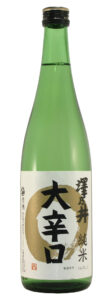
JUNMAI DAIKARAKUCHI - 純米大辛口(じゅんまいだいからくち)- dry type
This sake is a blend of Junmai Daiginjo Nakadori, brewed with up to 30% polished Yamad
The current head of the company is the 23rd generation. When it was founded about 300 years ago, the brewery was involved in forestry work, transporting lumber from the Okutama area to the center of Edo (Tokyo). The people who were engaged in hard labor naturally favored salty food, matching the dry sake well.
Even though the distribution network was not as developed as it is today, there are traces of this sake being consumed even in the Fukagawa area (the area around present Koto-ku, Tokyo, between the Sumida River and the Arakawa River), which was the destination for transporting lumber.
It remains one of Ozawa's signature products.

TOKYO KURABITO - 東京蔵人(とうきょうくらびと)- Tokyo Brewer
A Junmai Ginjo type, brewed using the traditional method (kimoto-zukuri)*3, it was launched in the wake of the decision to host the 2020 Tokyo Olympics. It became a hot topic at the Olympic media center and was also popular as a souvenir for overseas customers.
Note 3: Kimoto-zukuri
In the time when rice polishing technology was not developed, it required time for the rice to be saccharified (dissolved). In order to speed up the saccharification of rice, the brewer crushed steamed rice for starter culture. This crushed rice was called “kimoto” (or kimoto-zukuri).
Ref.: Nihonshu-no-Motoi

YOTSUHA - よつは – Four Leaves
A Junmai Ginjo type. The label design is based on the Ozawa family crest, "Takedabishi" (Waribishi)*4. The slightly sweet taste makes it easy to drink even for those who are not familiar with Japanese sake.
Note 4: Takedabishi is the crest of the Takeda family (see also Note 1). In 1050, Minamoto no Yoriyoshi prayed at the Sumiyoshi shrine for the pacification of the Abe clan in Oshu, and received a suit of armor bearing the crest of a split diamond. This armor was passed down from generation to generation as a family heirloom of his descendants, the Takeda clan of the Kai Minamoto clan, and became a symbol of the Takeda clan.
Ref. city.kofu.yamanashi.jp
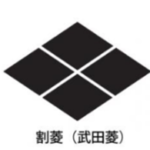
Lastly, a message from the Ozawa Shuzo brewery:
"We want people to know that even Tokyo is full of nature, and we want people to drink Ozawa’s Sake while experiencing that atmosphere."
Interview Date: March 10, 2022 by ZOOM
Interviewee: Mr. Shinnosuke Yoshizaki, Planning & Design Dept., Ozawa Shuzo, Co., Ltd.
Image Data Presented by: Ozawa Shuzo
Interview Note:
I am ashamed to admit that until this interview, I had assumed that the brewer's name was Sawanoi Shuzo. That is how often I had heard the name "Sawanoi" in the past.
When I first came across SOTEN, I had no idea that it was a Tokyo sake, nor did I know it was from Sawanoi, and looking at the innovative label, I thought it was a trendy sake. The SOTEN I first encountered was a blue bottled SOTEN of the winter limited version. It was a breathtaking moment.
I was told that it is mainly distributed in the suburbs of Tokyo. Too bad; Ome is pretty far from where I live, so I am just waiting for them to expand their channel nationwide.

